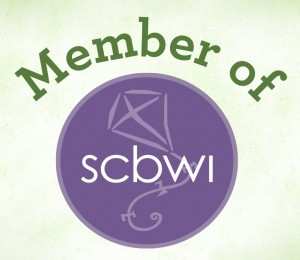So you wanna make a game?
I wrote this article for Games for Educators in response to a teacher asking me how to proceed with a game that he designed. So why am I re-posting it here? Because I get asked the question about once a week, and I want to make it as easy to find as possible.
Last month, a reader emailed me a question:
Have you considered writing an article on how a person might convert their own ideas for educational games into products for sale? What steps would be involved — artwork, manufacturer, legal, copyright, etc? I’ve seen many scenarios in my capacities over the years around which an entertaining rule-based game/learning experience could be based. Thank you.
I can’t count the number of times I’ve heard a teacher say something similar to me, and you know what? Most of the time, the game they go on to describe sounds absolutely fascinating. I think that this is because the game has already been through the most rigorous testing available: kids playing it.
Unfortunately, the vast majority of these games never go on to get published. I think of it as the funnel effect. Imagine a giant funnel. At the top of the funnel are all the games that anyone has ever wanted to make. At the bottom are the ones that make it to the market.
The funnel isn’t a bad thing or a good thing. It’s just a thing you have to deal with if you want to get your game, toy, or activity published.
With that said, let’s dive in.
How do I take my idea to market?
There are two basic methods: publishing and licensing. If you decide to publish, you will be in complete control of your own future. It means starting a company, making a web site, producing the game, doing the marketing, selling to retailers, and all the rest. Publishing a game can be incredibly rewarding both psychologically and monetarily. You are in charge of everything, and seeing the final product on the shelves is a serious rush. On the flip side, it involves money up front (to produce the games), and a huge investment of time and energy. It’s a big risk for a big reward.
Licensing the game to a publisher, on the other hand, means that the publisher takes all the risk, and spends all the time and capital to bring the game to market. You get a royalty on every game that is sold, but it’s much less than what you’d get if you made the game yourself.
Which do I choose? Licensing or publishing?
I’m actually in a fairly good position to answer this question, as I’ve done both. The keys, in my opinion, are lifestyle and mindset.
Publishing a game will consume all of your free time, and then some. You’ll find yourself pondering problems of production and warehousing and distribution and marketing during most of your waking hours. Once the game is produced, you’ll be going to trade shows and making cold calls and doing all sorts of crazy things to sell it.
Sound like a lot of work? It is. But the payoff is fantastic. You will have created something that can change lives. Maybe in only a small way, but still, that’s something special.
If changing your whole life to support a game sounds unappealing, consider licensing. The upside of licensing is that after a company has signed your game, all you really need to do is help support their advertising efforts. Another upside is that often the company that produces your game will do an absolutely fantastic job, like ThinkFun did with Distraction, making improvements that you didn’t even think of.
The downside of licensing is that you lose control. I have a half-dozen games on my shelf right now that no one wants to license, but which I’m absolutely convinced I could successfully bring to market. I have another game that a company has been evaluating for over two years. That kind of thing can drive you more than a little crazy.
To sum up, publishing a game is a lifestyle choice that brings with it high risk and high reward. Licensing is a much less drastic choice, one that can be rewarding but also frustrating.
Don’t get discouraged, though. Both are incredibly satisfying when they work.
Testing
Before going any farther, let me take a brief moment to mention one of the most important aspects of making a game or toy: testing. Since you’re an educator, this is easy. Let your students play. Then encourage your colleagues to play it with their students. Testing is a huge topic, but rather than go into all of its nuances, here’s what it boils down to: you need to find and correct any problems your product may have before you bring it to market.
Whether you license or publish, start with a tested product.
Self-publishing
Before you self-publish, look at the money. Whether you sell a game through distributors or sales reps, you’re only going to get 40% of the MSRP of the game. Putting this into dollars, if your game will sell for $20, you will only get $8 per game. Out of this $8, you have to pay for manufacturing, warehousing, marketing, safety testing, and freight. Don’t forget, of course, that you want to get some money out of it also. If your game costs $5 to manufacture, you want to have your MSRP higher than $20.
Remember, it’s not just about recouping costs. If you spend $10,000 to produce a run of games, you want to make sure you end up with enough money to at least produce a second edition of that game.
Once you’re happy with the money side of things, here are the pieces to self-publishing:
- Funding. If you don’t have the cash yourself, look into Kickstarter or try convincing someone else to “go in” with you.
- Artwork, Rules, and Editing. I can’t stress enough the importance of artwork. If you don’t believe me, take a look at this little piece I wrote on my blog. Different people get artwork in different ways. Some are talented artists that can do it themselves (I’m looking at you, Curt). Others team up with a friend. You can hire an illustrator (which is what I did). Just make sure that you get all the rights to the artwork. You might also be able to find an artist willing to work for a percentage of sales.
As far as rules and editing go, make absolutely certain the rules are clear and easy to understand. That’s something I can help you with, but this is not a sales pitch for me. The point is that you need to make sure you get it right. Poorly worded rules can kill even the best of games.
- Manufacturing. Don’t immediately jump to China. There are lots of great manufacturers here in the states (Delano comes to mind). Also, look for innovative solutions that might match your product. My first run of SiegeStones, for example, had the boards made by a company that made award plaques. I called them up, said I was making a game, and they were thrilled to get involved.
Another important tip: look into different suppliers for different parts of the games. Rolco makes great plastic parts, and you may well be able to get them cheaper direct than by having an “all-in-one” game manufacturer put your product together for you.
Finally, get lots of quotes, and talk to lots of people. The manufacturers (and part makers) all know that we have to do research before we make a game. It’s completely acceptable to request quotes and let people know that you’re finding out if the game can be made at a viable price. If you do decide to go with China, find a manufacturer that has a representative here in the states that you can deal with.
- Warehousing. My first warehouse was my garage. My second was an air conditioned self-storage unit. My third was a warehousing and logistics company in the midwest. I guess my advice is to start small. You can always get bigger. Don’t spend for space you don’t need.
- Legal. This is where I can’t really give too much advice other than to advise you to watch your costs. You can use uspto.gov to register your own trademark. If you want to get a patent… well, run the numbers. Don’t spend more on a patent than you’ll make from your games. I’ve talked to a lot of inventors who found themselves “upside down” (unable to break even, even if they sell out their inventory), and it’s a very unpleasant place to be.
- Advertising: Web, web, web. Advertise on the games for educators site (of course), and find other places (facebook and boardgamegeek come to mind). Try to get a review from sites like The Game Aisle.
- Look at the tradeshow schedule. There’s an old adage that you have to be at ToyFair. I’m not sure that’s true these days, but you at least need to investigate it. Also look into ChiTAG and the NSSEA and ASTRA shows, and whatever local(ish) tradeshows you can find. Nothing beats live demos from the inventor to sell a product. If your game is a hobby game, you need to be at GTS, and it would be a good idea to try the con circuit (DragonCon, Origins, GenCon, etc.).
I think that about covers it, at least in a rapid-fire sort of way. Any of these topics could be expanded into something much larger, but I hope I’ve given you enough to get started!
Licensing
I’m relatively new to the licensing game, but here’s how it works. First, you make a prototype. Actually, make a bunch. Playtest the heck out of them. Make sure they are as smooth as polished butter. When you’re ready, make an appointment and pitch to a publisher.
Let me talk about the pitch for a second. When I say pitch, I’m talking about believing in what you do and understanding how to convey that to a perfect stranger. A canned sales pitch won’t work. You need to be able to speak intelligently and naturally, to respond to questions and understand exactly what you’re selling. In short, practice your pitch. Practice and practice and practice. Before you pitch to a professional publisher, you should be confident enough in yourself to be able to sell your game to a cricket.
Remember that when you are pitching, you are asking the publisher to bet tens of thousands of dollars on you. They’re not going to do that unless they believe in both the product and in you. So you’ve got to know your stuff. Also, make sure you have a 30-second pitch ready. Believe me on that one.
Finally, learn about and make contacts in the industry. Actually, let me be more specific: go to T&G con. Yes, I know that it costs a little money, but it is absolutely indespensible both for learning the business and for meeting the people you need to pitch to.
There are agents out there who will pitch your game for you, but I don’t have any experience with them. My guess is that pitching to an agent is very much like pitching to a publisher, but I don’t know.
Does that answer the question?
I know that a lot of this sounds like hard work, but that’s what it takes to bring a game to market.
On the flip side, it really is a wonderful feeling to know that you’ve created something that is improving the lives of thousands of people. And yes, I do believe that, and you should too. Making games (and toys) is about more than just sales. It’s about enhancing people’s lives. This is even more true when your product has an educational benefit.
Good luck with your game!
Want to comment? Hit me up on Threads or Facebook!



